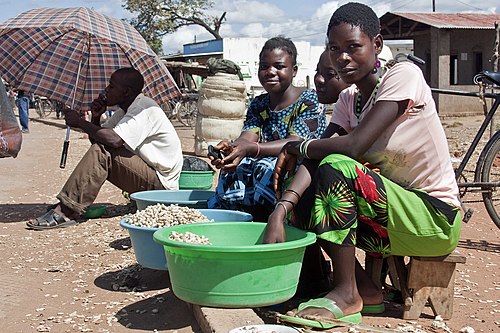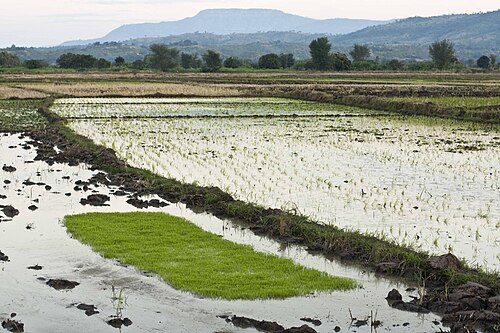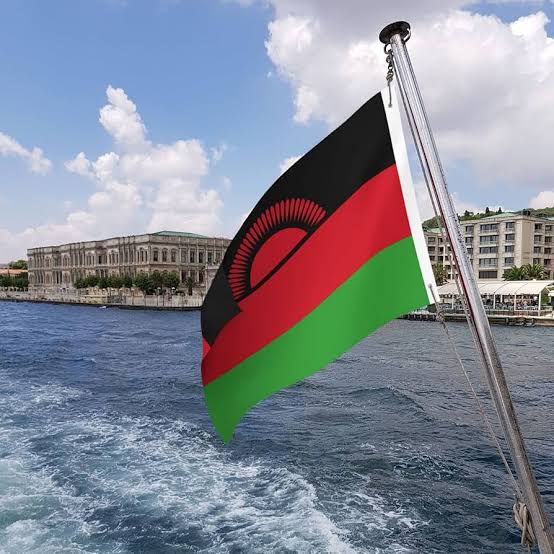Agriculture in Malawi

By BASHIR ADEFAKA
Agriculture in Malawi is a complex and vital sector that faces significant challenges but also presents opportunities for growth and development. With the right policies, investments, and sustainable practices, Malawi can enhance its agricultural productivity, maintain food security, and improve the livelihoods of its agricultural communities.
As a preamble to discussing agriculture in Malawi, the need has arisen to acquaint the African and global readership of Nigeria-based The DEFENDER Newspaper with the country in terms of geography, demography, government among others. With Lilongwe as its capital, Malawi, official Republic of Malawi, is a Southern Africa and landlocked country is bordered by Zambia to the west, Tanzania to the north and northeast, and Mozambique to the east, south, and southwest.


Malawi spans over 118,484 km2 (45,747 sq mi) and has an estimated population of 21,240,689 (as of 2024).
Lilongwe, the nation’s capital, is the largest city in the Republic, while the next three largest cities are Blantyre, Mzuzu, and Zomba, the former capital.
With a beautifully crafted Motto: “Unity and Freedom”, Malawi’s national Anthem is “Mlungu dalitsani Malaŵi (Chichewa)” translated in English as “O God Bless Our Land of Malawi”.

Like Nigeria, the official languages are English (the lingua franca) spoken concurrently along recognised regional languages which include: Chewa, Tumbuka and Yao.
Ethnic groups of the country and their sizes by 2024 census are: 25.2% Chewa; 20.4% Tumbuka; 17.9% Lomwe; 15.3%; Yao; 5.4% Ngoni; 5.9% Sena; 3.8% Mang’anja; 1.8% Tonga; 1.0% Ngonde; 0.6% Lambya; 0.5% Sukwa; and 1.1% other.
Religion (2018 census), Malawi is 82.3% Christianity; 58.5% Protestantism; 17.2% Catholicism; 6.6% other Christian; 13.8% Islam; 2.1% none; 1.2% traditional faiths; and 0.6% other.
A citizen of Malawi is called Malawian, its administered by a government with Unitary Presidential Republic as its governing system with democracy by ideology.
Malawi’s President currently is Lazarus Chakwera, • Vice-President Michael Usi, • House Speaker Catherine Gotani Hara, • Chief Justice Rizine Mzikamanda, and its l is called the National Assembly.
Agriculture is a cornerstone of Malawi’s economy, culture, and social structure. It plays a critical role in providing employment, contributing to GDP, and ensuring food security. Here are the key details about agriculture in Malawi:
Overview
– Economic Contribution: Agriculture contributes around 25% to Malawi’s Gross Domestic Product (GDP) and employs about 80% of the rural population. It is a vital sector for the country’s overall economic development.
– Export Earnings: Agricultural products account for a significant portion of Malawi’s exports, making it a key area for foreign exchange earnings.
Major Crops
1. Tobacco:
– Dominance: Malawi is one of the world’s largest producers of tobacco, which constitutes the largest share of its export earnings. It is a crucial cash crop for farmers.
– Challenges: The industry faces challenges such as falling global demand, competition, and concerns about health regulations.
2. Maize:
– Staple Food: Maize is the staple food of Malawi, consumed by the majority of the population.
– **Production**: The country primarily relies on rain-fed agriculture for maize production, leading to vulnerabilities during droughts or floods.
3. Other Crops:
– Legumes: Groundnuts, soybeans, and pigeon peas are significant for both household consumption and as cash crops.
– Horticulture: Vegetables and fruits, including tomatoes and bananas, are cultivated for local markets and export.
Farming Practices
– Smallholder Farming: Approximately 90% of farmers are smallholders, typically cultivating less than two hectares. They mostly use traditional farming methods and rely on family labor.
– Commercial Farming: A smaller portion of agriculture involves larger commercial farms, focused on cash crops for export.
Challenges
1. Climate Change: Malawi is susceptible to climate extremes like droughts and floods, impacting crop yields and exacerbating food insecurity.
2. Soil Degradation: Continuous farming practices without adequate inputs lead to diminishing soil fertility.
3. Food Insecurity: Despite being an agricultural country, many Malawians face food insecurity due to poverty, poor infrastructure, and market access.
4. Pest and Disease Pressure: Crops are vulnerable to pests and diseases, which can severely impact productivity.
Government Initiatives
– Policy Frameworks: The Malawian government has implemented various agricultural policies aimed at increasing productivity, enhancing food security, and promoting sustainable agricultural practices.
– Agricultural Development Programs: Programs like the Agricultural Input Program (AIP) have been introduced to improve access to inputs like fertilizer and seeds for smallholder farmers.
Innovations and Sustainable Practices
– Research and Development: Investments in agricultural research aim to develop more resilient crop varieties and improve farming techniques.
– Agroecology: There is a growing interest in sustainable practices that promote soil health, such as intercropping, crop rotation, and organic farming.
Conclusion
Agriculture in Malawi is a complex and vital sector that faces significant challenges but also presents opportunities for growth and development. With the right policies, investments, and sustainable practices, Malawi can enhance its agricultural productivity, maintain food security, and improve the livelihoods of its agricultural communities. The sector remains key to the country’s economic sustainability and development goals.









